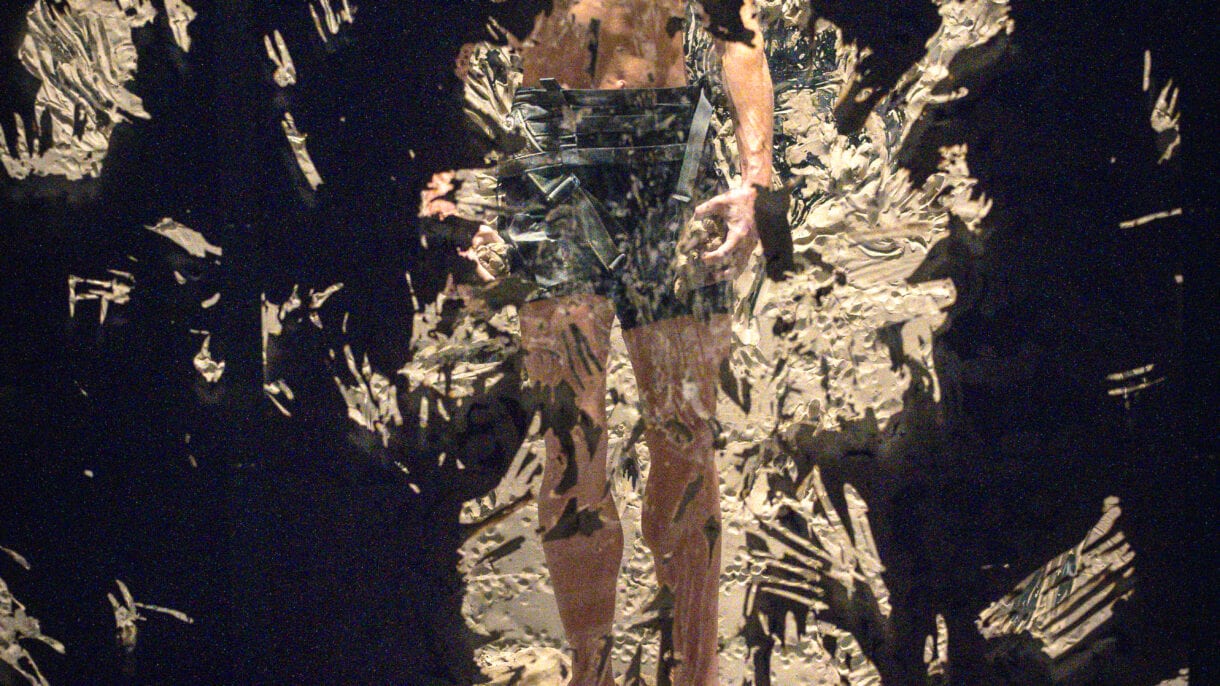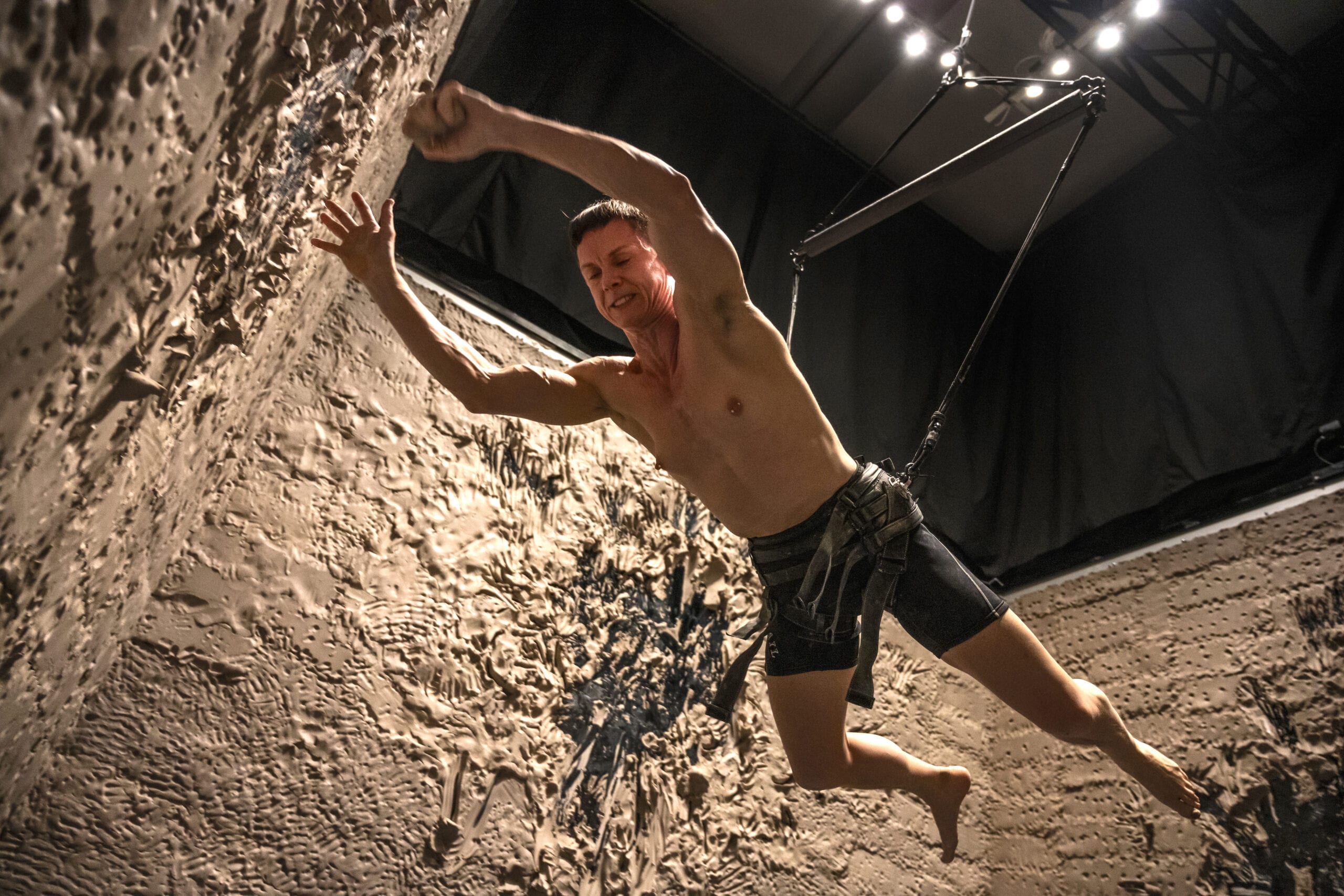L.A.-based performance artist Cassils has the perfect single name; it’s pronounced “castles.” With a muscular physique of gender-defying proportions, Cassils employs their unique body to manifest fascinating ideas about the challenges of really connecting, of empathy, in a modern, image-laden, consumerist society. By foregrounding the trans experience, Cassils tries to speak to us all.
“In a moment when people are so fixated on trans visibility—the salaciousness of transness—[I want to] create a visual language that plays with and problematizes the act of consuming, of looking without thinking of what it means to look,” Cassils says.
“What does it mean in terms of personal responsibility to consume and look without supporting and acting in solidarity with trans people?”
Cassils is a former Montrealer, born in Toronto, who has lived in L.A for nearly 20 years. They have built an impressive 15-year career that saw them set on fire, encased in ice and starring in the music video “Telephone” as Lady Gaga’s prison girlfriend.
A severe illness in childhood—gallbladder disease that went undiagnosed for years—left Cassils with a tortured relationship with their body. Weightlifting allowed them to reinvent that relationship. Each of their performance pieces requires a different but equally vigorous workout regimen. (They continue to run a fitness studio in L.A.)
Working in many disciplines—photography, film, sound, sculpture—Cassils is best known as a performance artist. In one of their more famous pieces, Becoming an Image, first performed in 2012, Cassils pummels a 2,000-pound obelisk of raw clay with their fists, elbows, knees and feet for as long as they can—more than 20 minutes in some iterations. The action takes place in total darkness; they are illuminated only by flashes of cameras that sear moments into viewers’ retinas. In a follow-up piece, Resilience of the 20%, the contorted clay shapes (“bashed bodies”) from Becoming an Image are cast in bronze and installed at sites where violence against LGBTQ2 individuals has occurred. Weighing up to two tons, the monuments are pushed into place through the community by volunteer partners that Cassils recruits from local activist and art groups. Cassils repeatedly animates a very formal art practice with real-world polemics.
Their most recent work, Up To and Including Their Limits, had its world premiere at Toronto’s Gardiner Museum in February. The title pays homage to groundbreaking feminist artist Carolee Schneemann and her piece Up To and Including Her Limits, first performed in 1973. That work saw Schneemann making tangled marks on paper as she was suspended, naked, in a harness. Part of a wave of experiential art in the 1960s and ‘70s, the piece offered a wry comment on the traditional role of the female nude in Western art, for Schneemann was both artist and art, creator and subject. It also critiqued the male privilege of artists like Jackson Pollock who could afford to fling huge amounts of expensive oil paint as he stood solidly over his canvases, while Schneemann had to make do with crayons and paper as she flew around upside down.
Cassils’ new piece opens with the artist hidden inside a giant acrylic cube lined with wet clay. They are completely obscured, their presence only hinted at from the sounds emanating from inside the cube, slaps and groans—unsettling sounds that simultaneously evoke exertion, sex, even a physical assault. (Eerily, wet clay sounds like flesh when struck or slapped by a person’s hand.) A mystery. Is this a crime scene?
Eventually, small portals open in the inches-thick clay where Cassils has scraped it away with their hands, exposing the see-through acrylic walls. It’s as if an animal is trying to claw its way out of a trap. Audience members move around the outside of the cube to peer through these growing openings. Cassils is visible inside, wearing nothing but shorts and a harness tethered to rigging. Periodically, the artist is hoisted up into the air, their body hijacked, forced to continue their labours as they bump around inside the cube. Is this some sort of bizarre circus act?
“It is very much like a sparrow being trapped in a glass box,” Cassils says.
Slowly, effortfully, Cassils clears more clay from the walls, flinging handfuls to the floor. It is physically demanding work that reveals the artist as much as it obscures their purpose. Sometimes they hang upside down to rest, a striking image that rekindles the impression of a crime scene.
This is Cassils’ first piece with a barrier between artist and viewers. The artist periodically stares out at an audience member with what looks like impatience or aggression, and there are hand signals from the artist to the rigger assistant. But the work continues in isolation, only accompanied by Cassils’ laboured breathing and grunts. “You can hear the exertion in the body,” they say. “You can hear that there’s some form of struggle.”
Slowly, the artist builds a considerable mound of clay in the centre of the cube. After nearly 90 minutes, they stop, unhitch the rigging and stand proudly atop the clay mound—a glistening classical statue on its rough-hewn plinth. The lights go out. The mind whirs.

Cassils at the end of their performance piece "Up To and Including Their Limits." Credit: Alejandro Santiago/Gardiner Museum
“It’s playing with the neoliberalist idea of visibility,” Cassils says. “As queers, visibility and representation are considered very important. And of course they are important. But how quickly are you usurped into a system that uses you and strips you of any kind of criticality? How quickly do you receive your rainbow Visa card?”
Nothing is free in our free market system, Cassils argues. “There is this idea that we should be mentally sane, completely stable, have all this well-being and full personal development,” they say. “That we’re free and that we have the ability to embody [whatever we want] and be whoever we are.”
But humans are anything but distinct units or atomized actors. We are flesh and blood and ever-changing. It’s this notion that, refracted through the trans experience, Cassils finds most fruitful. Citing actress Laverne Cox and the “transgender tipping point,” Cassils notes that ever-increasing tran visibility is happening at a time of heightened violence against trans people globally.
“So we have the imagery, but we don’t have the systemic change. We don’t have the undoing of these systems of white supremacy, of transphobia, of class struggles that intersect. And so I think this work is about that idea of trying to become while problematizing the act of becoming.”
Staring at Cassils’ fascinating trans body is not the same as knowing them, identifying with them. Seeing is not caring. Seeing is not action.
“I’m inspired in part by the writings of Jack Halberstam and Zach Blas, this notion of ‘queer darkness.’ What does it mean to use opacity, to retreat into the dark, to deny visibility when talking about embodiment of selfhood? How do we maintain a critical distance whilst being seen?
“If you can’t see me but you can hear me and you can feel a struggle, my hope is that it creates some kind of connection.”
Cassils is currently in residence at the Banff Centre for Arts and Creativity in preparation for the premiere of a new piece this July at the Walter Phillips Gallery. They are also scheduled to present Becoming an Image at Centre Pompidou, Paris, in the summer of 2020.


 Why you can trust Xtra
Why you can trust Xtra